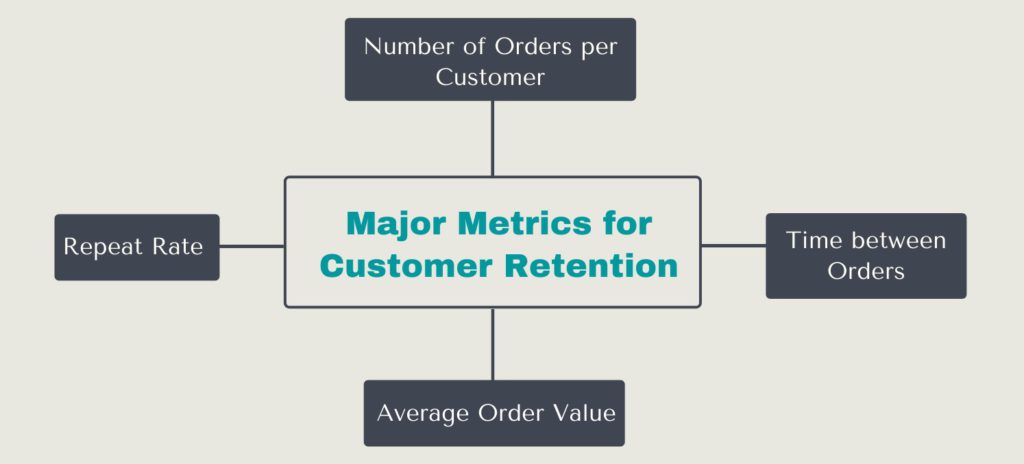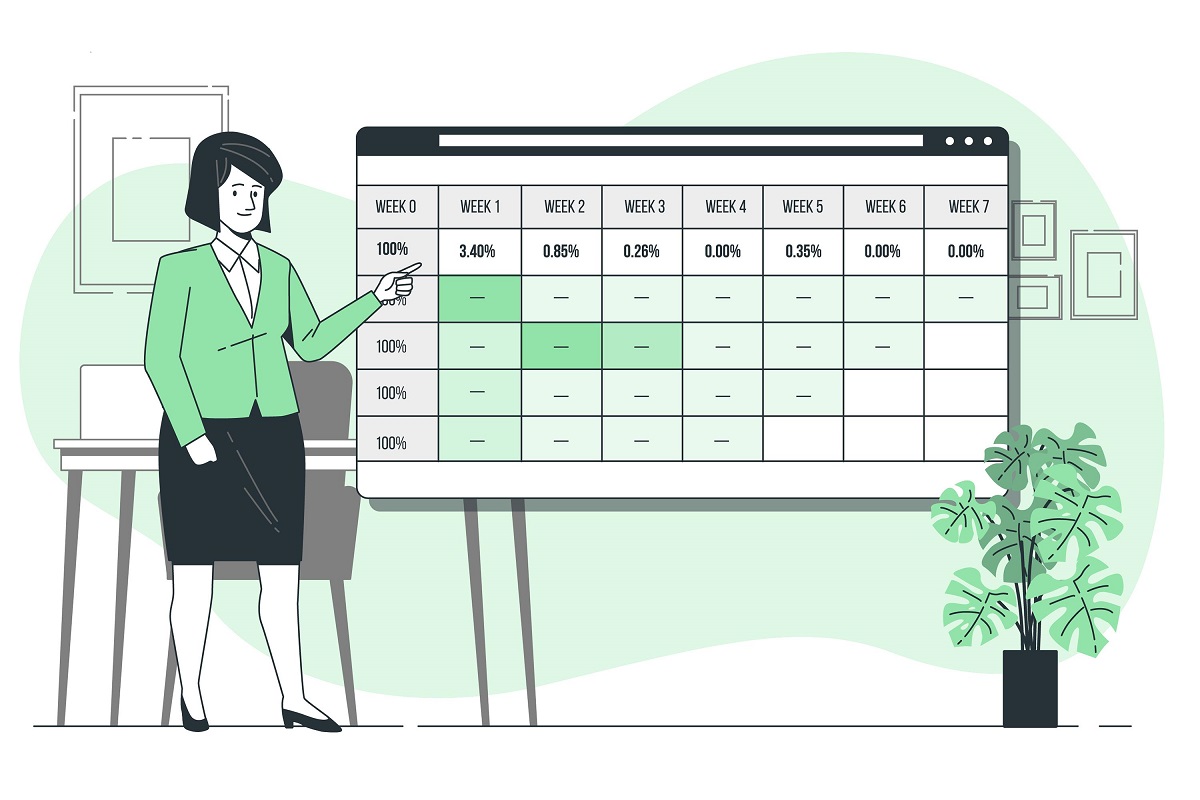How Cohort Analysis is Useful for Marketers?
A few months ago, we had written about the many ways in which cohort analysis can help businesses retain customers.
In fact, as compared to other forms of data analytics, cohort analysis is one of the easy ways for a business to run an experiment or do A/B testing.
Take marketing activity specifically. Cohort analysis can become a primary tool to understand the quality and the efficacy of your business’ marketing efforts. Not to forget its ability to forecast the future.
Table of Contents
- What is Cohort Analysis?
- Cohort Analysis: The Business Of Ecommerce
- Cohort Analysis and Customer Segmentation: Difference
- How Marketers Can Use Cohort Analysis
- 2 Types of Cohort Analysis
What is Cohort Analysis?
Observing the traits of a group of people (cohort) sharing characteristics over a selected period can give you insights into their behavior, today, and in the future, by identifying common patterns.
A cohort analysis example would be consumers who signed up for a digital catalog after the COVID-19 pandemic broke out.
By using this concept, a digital marketer can track such a group over time to understand it by identifying some common patterns or behaviors.
B2B cohort analysis allows digital marketers to adapt campaigns and messaging based on insights gained from customer data.
Furthermore, they can tailor their marketing activities and strategies to a specific target audience. Marketing teams can use it to group sales leads based on the type of campaigns that got them interested in the product, service, or brand.
This process can be used to understand consumer purchasing behavior by using sales leads who positively respond to a particular method of inbound marketing within a specific day (or week).
It can address questions like: How long does it take an average consumer to make a repeat purchase? Alternatively, what is the average time between purchases?
How many customers buy from the brand again when they have a different purchase type? When were these customers last engaged with your brand?
These questions all address the proper use of customer cohort analysis to help marketers better target the right customer.
Cohort Analysis and the Business of Ecommerce
What is a customer retention analysis in business? Ecommerce is a highly competitive world. Brand recall is of paramount importance here, and so is brand loyalty. For both, cohort analysis can be of big help.
Ecommerce marketers can use it to understand the direction their brand is going in, as also their customers. Cohort analysis tools are useful to track the effect of customer retention campaigns.
Measure Customer Retention Rate Using Cohort Analysis
More specifically, here’s how this form of analysis can be helpful for e-commerce marketers:
Conversion rate: To comprehend how fast are your leads converting into customers.
Product/service popularity: Some products or services are bought more often than others. These may also be better at creating long-term customers.
Marketing wisdom says that profit is generated by returning consumers than one-time buyers. That’s where cohort analysis can help an e-commerce business differentiate between their “one-time” product or service; does that do not sell more as compared to those that “fly off the shelf”.
Once this differentiation is made, an e-retailer can start to push popular products or services harder, and ditch the under-performing ones.
Brand loyalty: It is a known fact that faithful customers spend over 50% more than new customers, on average. Again, marketing rules tell us that it is less expensive to hold on to loyal customers than it does to go out and find new ones.

How do you do that? Bring together a group of customers by their first date of doing business with your brand.
After that, find out the revenue this particular cohort fetched for you in about, say a nine-month period.
This form of analysis will help you find out the customers from this group who purchased from your e-commerce business once, or multiple times, thus identifying the most profitable ones.
Difference between Cohort Analysis and Customer Segmentation
We do see the words “cohort analysis” and “customer segmentation” being used interchangeably, but let us tell you they do not mean the same thing.
Segments and cohorts are also often confused. Customers can be segmented into groups based on certain shared commonalities, the most basic being demography. The RFM model, Recency, Frequency, and Monetary analysis is a popular segmentation method.
Cohorts tend to be confused with general demographics that are typically used to segment markets. Demographic categories like income level, gender, and age do not qualify as marketing cohorts.
Demographics are useful for segmenting mass markets, but they do not allow marketers to track the purchase behavior of individual consumers. Demographic information can be combined with cohort data, however, to tailor products and marketing campaigns.
Unlike segments, a cohort is a slightly more focused group of customers having the same characteristic. It’s akin to putting “similar” clients in a bucket. A typical cohort is mostly a time-sensitive grouping.
For example, those customers who signed on during Christmas this year. Another differentiator can be – when customer groups are not time-dependent, they can be called segments instead of cohorts.
Other typical forms of cohorts besides time-based ones are behavior-based, and segment-based ones.
Cohorts are segments, but segments are not cohorts. Cohorts are specifically connected by similar events and periods of time.
The difference between cohorts and segments is that segments are based on commonalities across a broader range of factors.
For example, an entire class of high school seniors graduating in the same year could be one cohort, but they are also one segment because they share age, location, and school affiliation.
Segmentation is important for marketers because it allows them to know their customers better, predict behavior, and identify areas where they could make changes to improve services or products.
Most businesses begin by looking at their customers based on age, race, gender, income, etc. While these are important factors to consider, they don’t tell the whole story.
Segmentation allows you to make better decisions by understanding where your customers are coming from, what they value, and how they behave.
In cohort analysis, before going ahead, you need to decide 3 things: what to define the cohort by, which metric to use, and the period over which to measure.
(Express Analytics’ customer data platform Oyster offers cohort analysis where all the manual work like pulling raw customer data, and defining the cohorts are done for you.)
How Marketers Can Use Cohort Analysis
Before a marketing team starts to use cohort analysis, here are some basic questions it needs to ask:
- Do I want to know what’s working, and what’s failing in my marketing campaigns?
- Do I need insights to change my marketing strategy?
Then, it can embark on the cohort analysis journey by first, creating a cohort (s).
The latter could be of the below or any other:
Those who have signed up: Create a cohort with those who are first-time sign-ups and observe their subsequent actions.
Those who have re-purchased over time: Form a cohort of those clients who have repurchased over a certain period of time.
Those who have been retained: Find the customers your business acquired over a period of time, and then check how long they kept (or are) doing business with your brand.
These cohorts will allow you to understand one or more of the following:
- Just how well your business is at retaining new clients
- Whether your landing pages or sign up forms are working
- Why a specific cohort of customers stop purchasing
- Which product categories are making people come back
- Which marketing channels are popular with your customers
Cohort analysis marketing can be used by digital marketers to track your marketing campaign’s performance. Marketers can find out scientifically which of these are converting and which are not.
It can also be used to find out your consumer retention rate, and help you understand whether you need to put in more on retention itself.
Every stage of a customer lifecycle can be monitored to understand whether customers are being given enough attention at every step in the funnel or not?
2 Types of Cohort Analysis
- Acquisition cohorts
- Behavioral cohorts
Acquisition Cohorts
This clubs customers who were acquired or had signed up for a particular service. This kind of user acquisition can be monitored according to a set time frame, say daily or weekly, or more.
Using cohort analysis in marketing, you can determine the effectiveness of your different acquisition channels.
If you acquire users at a specific rate per week, you can look at how many users are active each week after the acquisition. Is the trend increasing or decreasing?
If it’s increasing, maybe you need to increase your acquisition efforts. If it’s decreasing, you may want to reevaluate your acquisition strategy.
Behavioral Cohorts
On the other hand, behavioral cohorts segment consumers based on their activities over a period of time.
A behavioral cohort analysis is a segment of users defined by the actions they take over your product.
Behavioral cohorts are the best way to group your users in order to observe different behaviors in relation to any event or conversion you want to track.
Take for example when Google ran an ad campaign to increase their signups in the Photos app.
It was identified that there were two important behavioral cohorts within the Photos app: users who took selfies, and users who took screenshots.
Because Google knew that selfies and screenshots were important to track for this campaign, they could run a campaign targeted to users who take selfies in order to drive signups in the Photos app.
Users with similar activity across your app are most likely to be interested in the same things. They will likely be the best targets for the ad campaign because they are most likely to interact with it.
A behavioral cohort is created by defining what activities make up a cohort, and then grouping users based on their activity across your app.
Now, to help you understand how cohort analysis can help marketing here’s an example by our data analyst Pankaj Katkar.
In this illustration, Pankaj has taken the “Online Retail Data Set” from the UCI Machine Learning Repository.
This is a transaction data set containing all the transactions between 12/01/2010 and 12/09/2011 for a UK-based online retail firm.
Using this data, he has done cohort analysis on the number of active users starting from a particular month.
Here, we are doing cohort analysis based on the transaction done by the user in the month as it is a one-year dataset.
To download this example, fill this simple form.
In conclusion: Marketing analytics tells you what’s working and what’s not. Cohort analysis will tell you how to adjust your marketing activities, and which marketing activities your team needs to focus on. It helps you answer questions like what’s your users’ retention rate and when do users start to churn, among others.
Build sentiment analysis models with Oyster
Whatever be your business, you can leverage Express Analytics’ customer data platform Oyster to analyze your customer feedback. To know how to take that first step in the process, press on the tab below.
Liked This Article?
Gain more insights, case studies, information on our product, customer data platform

